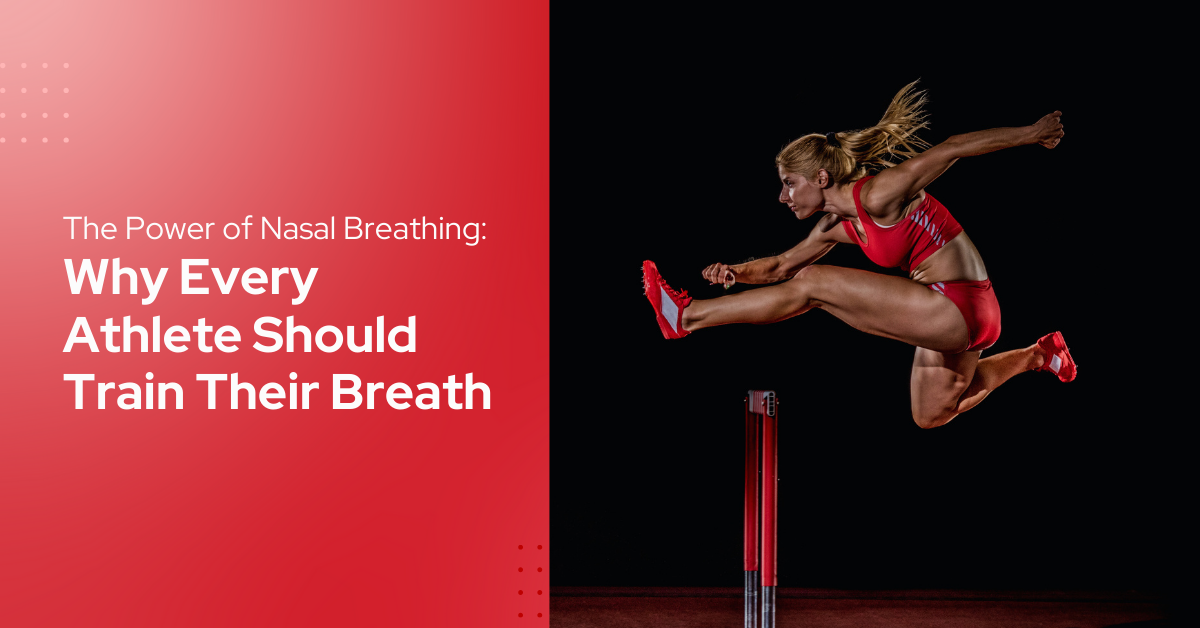The Power of Nasal Breathing: Why Every Athlete Should Train Their Breath
The Overlooked Secret to Peak Performance
Athletes are always looking for an edge—better training, superior nutrition, and innovative gear. But one of the most effective ways to enhance endurance, recovery, and overall performance is often overlooked: nasal breathing.
Breathing through the nose isn’t just about airflow—it has a direct impact on oxygen efficiency, stamina, and even mental clarity. By incorporating nasal breathing into their training, athletes can improve their endurance, reduce fatigue, and optimize their recovery time.
Why Nasal Breathing Matters for Athletes
The way you breathe affects every system in your body. Unlike mouth breathing, which can lead to shallow and inefficient oxygen intake, nasal breathing promotes deeper and more controlled breaths. Here’s why it’s a game-changer for athletes:
1. Increased Oxygen Efficiency
Nasal breathing helps regulate oxygen and carbon dioxide levels in the bloodstream, allowing muscles to receive optimal oxygen supply. This leads to better endurance and improved stamina during long training sessions or competitive games.
2. Improved Endurance and Stamina
By breathing through the nose, athletes train their bodies to use oxygen more efficiently. This reduces early fatigue and allows them to sustain peak performance for longer periods.
3. Faster Recovery
Nasal breathing activates the parasympathetic nervous system, which promotes relaxation and faster recovery post-exercise. This means less soreness and quicker muscle repair after intense workouts or games.
4. Enhanced Focus and Mental Clarity
Oxygen is essential for brain function. Nasal breathing delivers a steady supply of oxygen to the brain, improving concentration, reaction time, and decision-making during high-pressure moments in sports.
5. Stronger Respiratory Muscles
Training with nasal breathing strengthens the diaphragm and other respiratory muscles, leading to better lung capacity and breath control—crucial for endurance athletes and those in high-intensity sports.

How Sport Pal Promotes Nasal Breathing
At Sport Pal, we’ve designed our innovative mouthguard to do more than just protect your teeth—it actively promotes nasal breathing. Unlike traditional mouthguards, Sport Pal features a built-in tongue positioning system that naturally encourages athletes to keep their tongue in the correct position, making it easier to breathe through the nose rather than the mouth.
By using Sport Pal, athletes can train their bodies to breathe more efficiently, maximizing oxygen intake and improving overall performance. Whether you’re in a high-impact sport or an endurance-based activity, Sport Pal helps you sustain energy longer, reduce fatigue, and recover faster—all by simply optimizing the way you breathe.
How Athletes Can Train for Nasal Breathing
Switching from mouth breathing to nasal breathing takes practice, but the benefits are worth it. Here are some simple ways athletes can incorporate it into their training:
-
Start Small: Practice nasal breathing during warm-ups and low-intensity workouts before integrating it into high-intensity training.
-
Use Breath Training Devices: Tools like Sport Pal encourage nasal breathing naturally during activity by positioning the tongue correctly.
-
Try Breath-Hold Training: Holding your breath for short intervals during workouts helps increase lung efficiency and oxygen utilization.
-
Be Consistent: The more you train with nasal breathing, the more natural it will become, leading to long-term performance benefits.

The Future of Athletic Performance
As more research emerges, top athletes are beginning to incorporate nasal breathing into their training regimens. Whether you’re a football player, a runner, or a martial artist, learning to control your breath can elevate your performance, improve endurance, and aid in recovery.
With Sport Pal, you’re not just protecting your teeth—you’re training your body to breathe better, perform stronger, and recover faster. The next time you hit the field, track, or gym, remember—the way you breathe could be the key to your best performance yet.

Share:
Sport Pal x Tiki Barber: Elevating Athletic Performance with the Ultimate Mouthguard
Unlocking Athletic Power: How Jaw Alignment Transforms Strength and Stability